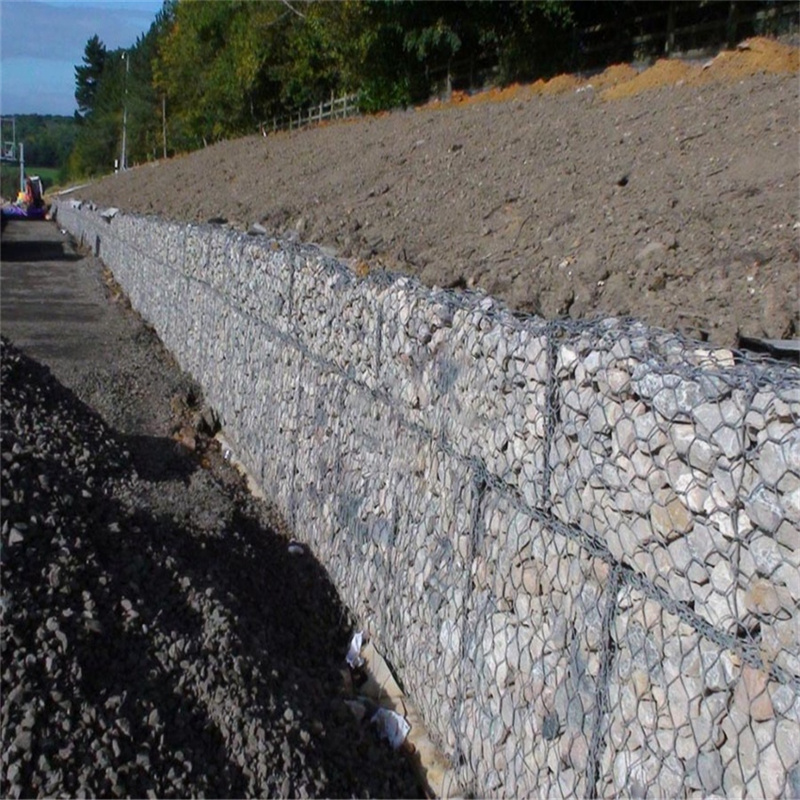Dùbh . 05, 2024 16:49 Back to list
Terraced Landscape Design Using Gabion Walls for Enhanced Stability and Aesthetic Appeal
The Elegance and Functionality of Gabion Wall Terraces
Introduction
In recent years, landscape architects and homeowners alike have turned to innovative solutions for creating resilient and visually appealing outdoor spaces. Among these is the gabion wall terrace, a structure that combines practicality with aesthetics. This article explores the benefits of gabion walls and how they can transform sloped landscapes into stunning terraces while ensuring durability and sustainability.
Understanding Gabion Walls
Gabion walls are structures made from wire mesh cages filled with stones, rocks, or other materials. The term gabion is derived from the Italian word gabbione, meaning large cage. These walls have been used for centuries in various applications, from civil engineering projects to military fortifications. Today, they serve as an effective way to manage soil erosion and create terraced landscapes.
Advantages of Gabion Wall Terraces
1. Erosion Control One of the primary benefits of gabion walls is their ability to control soil erosion. They are particularly beneficial for sloped terrains where heavy rains can cause significant soil loss. The stones within the gabions absorb rainfall, reducing runoff and allowing water to seep into the ground. This helps maintain the integrity of the landscape and prevents issues related to soil displacement.
2. Natural Drainage Unlike traditional retaining walls, gabion walls are porous, which allows for natural drainage. This feature not only prevents the buildup of hydrostatic pressure behind the wall but also promotes healthy groundwater recharge. This ecological approach contributes to a sustainable landscape design, benefiting both plant life and local ecosystems.
gabion wall terrace

3. Aesthetic Versatility Gabion walls can be designed to complement various architectural styles and landscaping themes. The choice of stones used in the gabions can reflect the local geology or the preferred aesthetic of the homeowner. Whether smooth river rocks or rugged mountain stones, gabion walls can enhance the visual appeal of outdoor spaces while providing functional support.
4. Cost-Effectiveness Constructing gabion wall terraces can be more cost-effective compared to traditional concrete or masonry walls. The materials used—such as rocks—are often locally sourced, reducing transportation costs. Additionally, the labor involved is typically less intensive, especially if the stones can be placed with minimal additional support structures.
5. Environmental Benefits Gabion walls promote biodiversity by providing habitats for various organisms. The spaces between stones can serve as shelters for small animals and insects, enhancing the ecological value of the landscape. This contributes to healthier ecosystems and supports a wide range of plant life, creating vibrant, living terraces.
Installation and Maintenance
Installing gabion wall terraces involves a few key steps. First, careful planning is needed to design the terracing layout. The site should be excavated to create a stable foundation for the walls. Once the layout is finalized, the gabions are assembled, filled with stones, and secured in place. Regular maintenance primarily involves checking for structural integrity and ensuring that the stones remain securely in their cages.
Conclusion
Gabion wall terraces offer an innovative solution for slope management while enhancing the beauty of outdoor spaces. They embody a harmony of function and form, providing environmental benefits, aesthetic appeal, and cost-effectiveness. As more homeowners and landscape architects embrace sustainable practices, gabion walls are poised to become a popular choice for creating resilient and attractive landscapes. Incorporating these structures into your landscaping plans can lead to a stunning transformation, ensuring your outdoor space is both functional and beautiful.
-
Visualizing Gabion 3D Integration in Urban Landscapes with Rendering
NewsJul.23,2025
-
The Design and Sustainability of Gabion Wire Mesh Panels
NewsJul.23,2025
-
The Acoustic Performance of Gabion Sound Barriers in Urban Environments
NewsJul.23,2025
-
Mastering the Installation of Galvanized Gabion Structures
NewsJul.23,2025
-
Gabion Boxes: Pioneering Sustainable Infrastructure Across the Globe
NewsJul.23,2025
-
Custom PVC Coated Gabion Boxes for Aesthetic Excellence
NewsJul.23,2025
-
Installation Tips for Gabion Wire Baskets in Erosion Control Projects
NewsJul.21,2025






